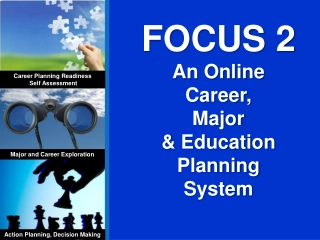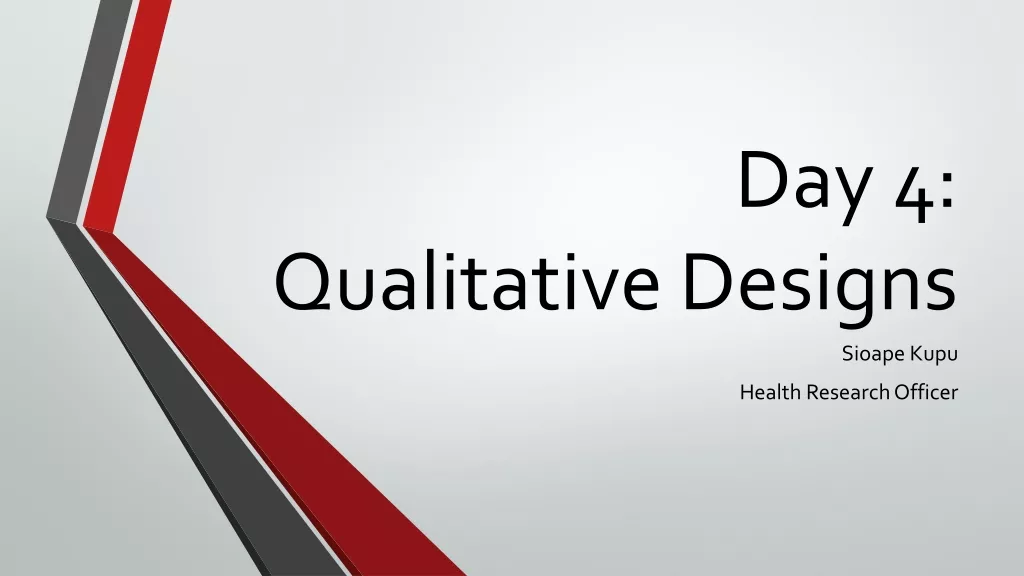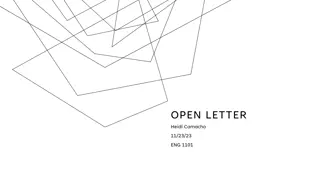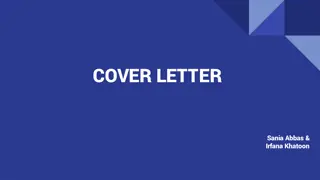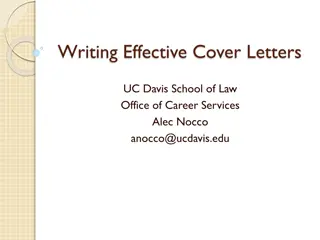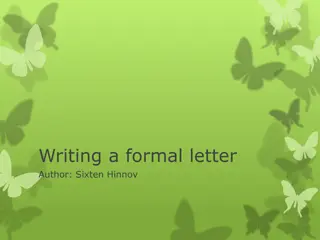Mastering Cover Letters for Career Readiness
Cover letters are essential in the job application process, serving as your personal introduction and showcasing your qualifications. They provide an opportunity to make a great first impression and complement your resume. This guide covers the purpose of cover letters, what they should include, and tips on crafting an effective one.
Download Presentation

Please find below an Image/Link to download the presentation.
The content on the website is provided AS IS for your information and personal use only. It may not be sold, licensed, or shared on other websites without obtaining consent from the author.If you encounter any issues during the download, it is possible that the publisher has removed the file from their server.
You are allowed to download the files provided on this website for personal or commercial use, subject to the condition that they are used lawfully. All files are the property of their respective owners.
The content on the website is provided AS IS for your information and personal use only. It may not be sold, licensed, or shared on other websites without obtaining consent from the author.
E N D
Presentation Transcript
Career Readiness: Cover Letters Presented by: Dr. Dimar Brown, The Readiness Movement, LLC
Agenda After today, you will know: What cover letters are Their purpose How to use them in the hiring process
What are cover letters? It is your personal greeting that will accompany your job application. It is equivalent to: A hello, what s up?, or how s it going? in a conversation A WYD or HRU in a text message A voicemail during a missed call A postcard in the mail
Cover Letters Have Two Primary Functions
Function #1: First Impression Cover letters are designed for you to make your first impression on individuals a part of the hiring process.
Function #2: Introduce Resume In addition to allowing you to make an everlasting first impression, cover letters introduce your resume.
Cover letters should cover: 1. Who you are and why you are applying 2. What relevant skills and qualifications you possess 3. How you have effectively used these in the past 4. How would your skills and qualifications benefit the employer 5. Why you want to work for the employer
Cover letters are not: A letter version of your resume (it introduces it) A general template (it should be customized) Going to land you employment (cover letters provides opportunities to show employers how you differ from other candidates with similar skills and qualifications)
What do cover letters look like? Here are some guidelines: 1. No more than 1 page in length (3 paragraphs). 2. Write clearly, concisely, and error-free. 3. Address it to the hiring manager (if unknown, use something general like The Human Resources Search Committee ). 4. Ensure headers and formatting is consistent with your resume.
Do you always need a cover letter? If a job posting asks for a cover letter: YES If a job posting doesn t ask for one, but you allowed to add additional attachments: YES If a job posting doesn t ask for one and you are applying to a job via email: YES, the cover letter can serve as the body of your email. If a job posting doesn t ask for one and there is no option to provide one: NO Example: Job asks for one and applying through email: https://www.idealist.org/en/nonprofit-job/f1e273d1253f4fdcafb8fe4e4751addd-communications-content-officer-the-fund-for-global- human-rights-washington
Before you begin writing you should: 1. Find a job to apply to. 2. Review the job description to scan for required skills, education and qualifications (highlight and key terms, words used). 3. View the company s website to look for: a. Mission statements and visions b. Language used c. Name of hiring manager (if available)
After the cover letter has been written: Check for typos. Ensure that the formatting and alignment matches your resume. https://bit.ly/2yrmTEz
Recap: Cover letters serve as your first impression. They are customized to explain you, your skills and interest in the position. They are brief. They should introduce the resume.


